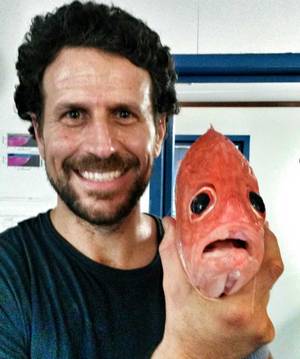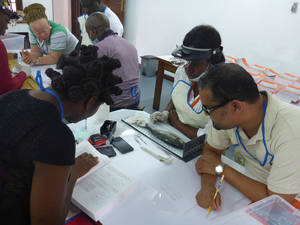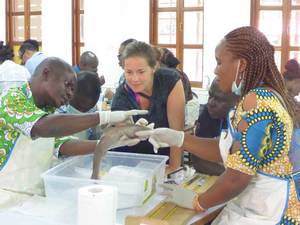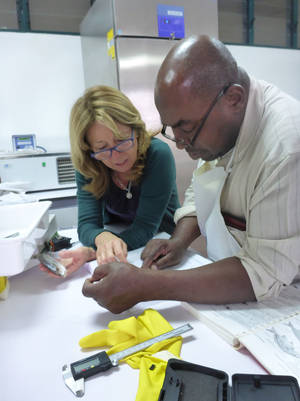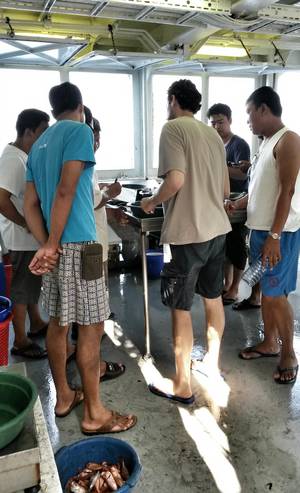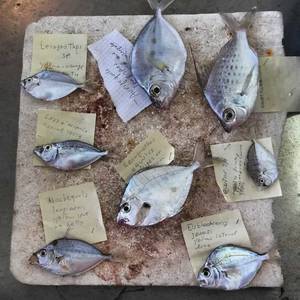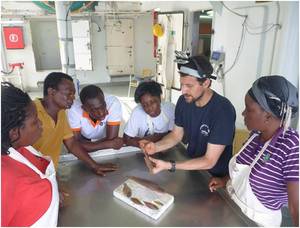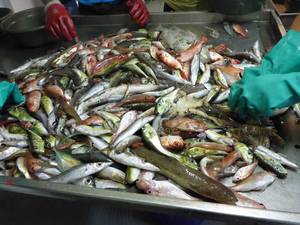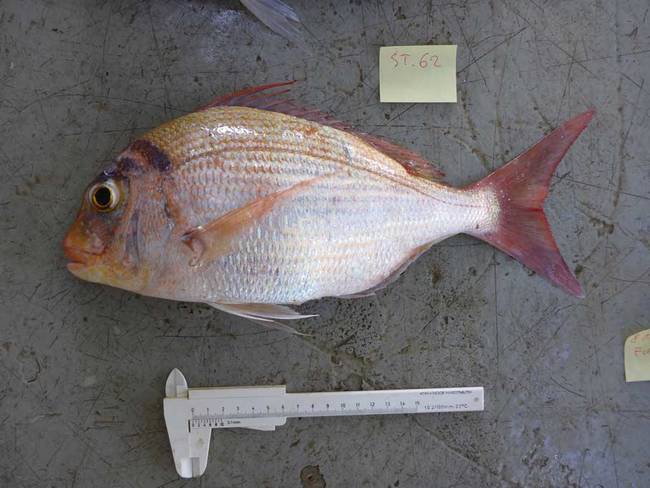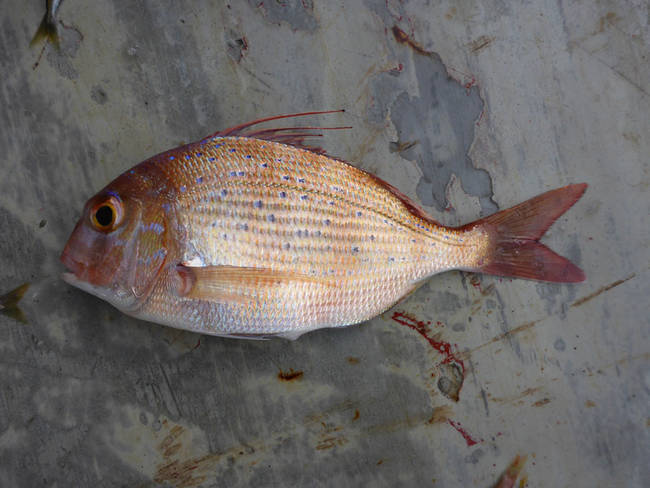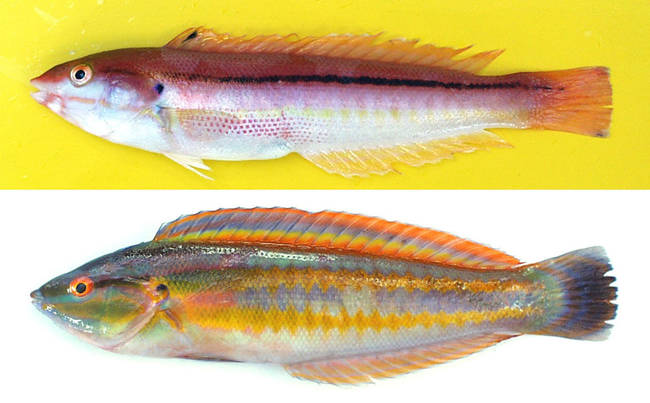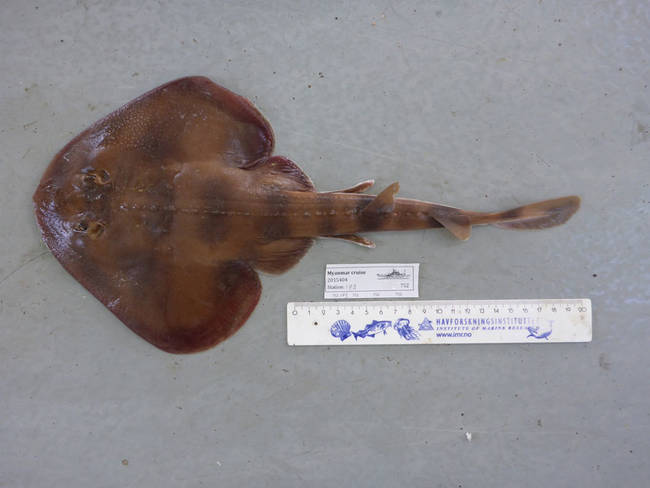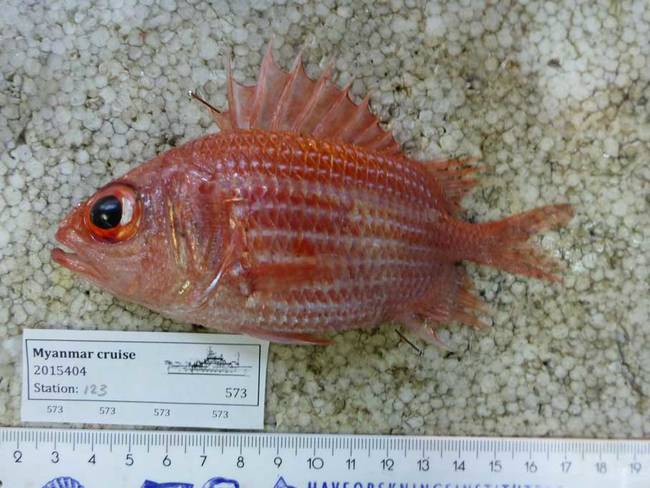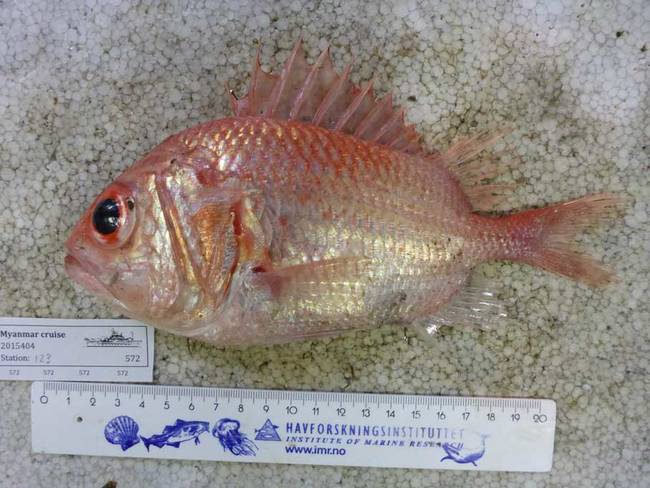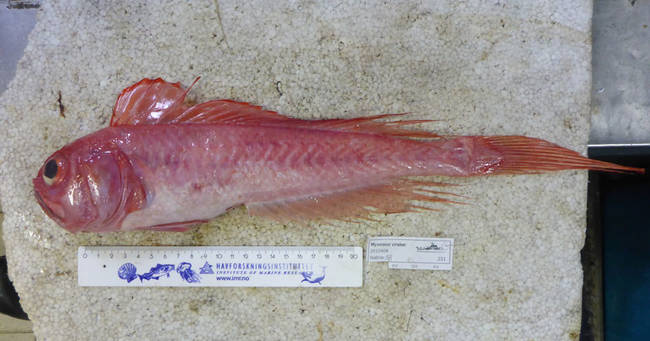It’s not all about the waves - Nansen training on dry land
Over the past weeks, we’ve had our attention focused on the launch of the impressive new FAO-Norwegian marine research vessel – the R/V Dr. Fridtjof Nansen – scheduled for 24 March in Oslo’s harbour.
You may have seen our posts highlighting various aspects of the Nansen, from Manuel Barange, FAO Fisheries and Aquaculture Division Director’s reflections on is time on the Nansen and his thoughts on what makes the programme so unique.
We also spoke to Kwame Koranteng, FAO’s EAF-Nansen Project Coordinator, and asked him to walk us through how survey voyages are set up.
Over the past weeks, we’ve had our attention focused on the launch of the impressive new FAO-Norwegian marine research vessel – the R/V Dr. Fridtjof Nansen – scheduled for 24 March in Oslo’s harbor.
You may have seen our posts highlighting various aspects of the Nansen, from Manuel Barange, FAO Fisheries and Aquaculture Division Director’s reflections on is time on the Nansen and his thoughts on what makes the programme so unique.
We also spoke to Kwame Koranteng, FAO’s EAF-Nansen Project Coordinator, and asked him to walk us through how survey voyages are set up.
But did you know that not all the Nansen training and capacity development work takes place on the high seas? We caught up with FAO Fish taxonomy consultant Peter Nick Psomadakis, who, in addition to having participated in survey cruises on the Nansen off the coast of Myanmar (April/June 2015) and Ghana (April 2016), has also led many seminars initiated by Nansen and designed to build national and regional capacity. Peter, is also the lead author of the pocket and field species identification guides produced by FAO for Pakistan's marine living resources.
Many people do not know about the Nansen workshops and seminars held – generally on land - to train scientists in different disciplines. With which training are you involved? How are they set up?
I was personally involved in running species identification courses at a regional level. The idea of organizing these courses stems from the need to improve the marine resources identification in many regions where the percentage of catches reported to species level is still low. For this reason, Kwame Koranteng, FAO’s EAF-Nansen Project Coordinator asked me to plan and organize a training course aimed at improving the capabilities of fishery workers on how to correctly identify marine species of interest to fisheries in developing countries. The main issues in setting up such courses are to find hosting institutes with good laboratory facilities large enough to accommodate all participants of the course and ensure that course materials, especially fish and invertebrate samples are available and properly stored.
How have those seminars been run? What type of interaction with the scientists did you have? What was the feedback?
These courses are usually in two parts; theory sessions covering one or more taxonomic groups and providing the participants with an overview of the relevant technical terms, anatomy and examples of distinctive characters of the main families, genera and species occurring in the region, followed by practical sessions during which the participants identify selected species belonging to the groups dealt with during the lectures.
Many of the participants attending these courses have a lot of experience in the field and are able to identify many of the species when they see them. However, we find they have difficulties when faced with an unusual species that they have never seen. This is happening more frequently nowadays as a consequence of species’ range expansion due to climate change.
For this reason, in our courses we make sure that all participants do not only learn the theoretical elements of fish and macroinvertebrate taxonomy but are also trained to use species identification tools that include taxonomnic keys for proper identification of species during the practical sessions. These tools have been developed in the last 40 years by the FAO FishFinder Programme with the aim of improving fisheries statistics and biodiversity knowledge. So far the program has produced identification guides for developing countries for more than 8 000 aquatic species including bio-ecological, geographic and fisheries information.
Given the “participatory” approach of the trainers during lectures, interaction is very positive between trainers and attendants. Participants are stimulated to comment on the “ecological significance” of different body shapes and specialized anatomical structures of fish species dealt with during the course. Understanding these concepts usually generates greater appreciation of the amazing diversity of fishes, stimulating participants to engage more deeply in taxonomic studies.
Participants have repeatedly expressed the importance of such courses for their work and professional careers and some of them have gone back to their countries and organized similar training courses for other scientists, enumerators and fishery observers.
In your experience, what are some of the most common areas for capacity development requested by countries?
In general terms, at the end of each training the participants request for additional modules to strengthen knowledge gained. In the specific field of taxonomy and fish identification, understanding the adequate procedures to identify marine fish and invertebrates constitutes the base for improvement of scientific knowledge to study fish and invertebrates, the level of exploitation of fisheries resources, as well as the impacts of human activities on fisheries.
In a scenario of climate change and global impacts on fishery stocks, I think that training in marine species identification in developing countries is now more than ever crucial to improve fisheries management of the species and resources to be targeted. Participants in our courses have expressed interest in improving their capabilities in fish growth studies and fish reproduction studies.
Participants also make request for other courses that they know the EAF-Nansen Project conducts. For example, several requests are received for training in design and implementation of fisheries management plans using the EAF framework, survey data analysis and in particular the use of Nansis, a survey information system for logging, editing, analyses and retrieval of biological data from marine research surveys.
Nansis is used onboard the R/V Dr Fridtjof Nansen and all cruise participants get the opportunity to learn it and are also able to have a copy. However, once at home, installing and setting up the software becomes a challenge and some quickly give up. For this reason the EAF-Nansen Project, has organized a number of training workshops on Nansis and survey data analysis, including a training-of-trainers course held in Casablanca, Morocco in 2014. The Casablanca course was intended to create a network of expert users to serve as focal points in the regions where the project operates.
Countries also often highlight the need to improve knowledge fish stocks and for this reason the EAF-Nansen Project also has in the past also organized training courses on fish stock assessments as well as a three-weeks training course on trawling and acoustic surveys held in Durban, South Africa in 2015.
It is important to note that some of these courses are given in languages other than English. For example the project has organised course in French and in Portuguese.
You also had the chance to offer taxonomy lessons on board the Nansen. How did those sessions come about? Was it something the scientists considered useful to their work?
The taxonomy sessions on board are usually undertaken when difficulties in distinguishing similar species arise during sorting operations. This implies practical demonstration directly on the deck with the local scientists involved in sorting operations. During these demonstrations, the distinguishing features of “problematic” species are elucidated and the local scientists are guided through the identification process.
It is important to tackle immediately identification issues on board the vessel in order to ensure proper identification during sorting and high quality of the data arising from the catches. Identification issues mostly concern those fish and invertebrate groups showing a conservative morphology and those groups that show substantial change between juvenile and adult stages and between male and female of the same species. Some identification problems may arise also with changes in the usual color patter of some species during the reproductive season (nuptial livery) as is the case with the male of the blue-spotted seabream, Pagrus caeruleostictus as was the case in the 2016 Nansen survey in Ghanaian waters.
In this species, the usual color pattern is pink with large bluish spots on back and sides of the body but during the reproductive season, old males loose the spots and display a distinctive yellow mask on the head. The finding of these old males in the catches may contribute to the identification of important reproductive areas for this valuable commercial species.
The Nansen surveys also offer the unique opportunity to undertake biodiversity exploration studies, which have the scope to discover and describe new species from remote and under documented parts of the world. A recent example is the discovery of two new soldierfish species (Ostichthys convexus and O. daniela) during the 2015 Nansen Myanmar cruise. Several other species were discovered on the same cruise, including one ray species, Platyrhina psomadakisi, one bathyclupeid, Neobathyclupea melanoptera, one cepolid, Owstonia nudibucca, and other seven bony fish species are in the process of being described. In addition, more than 50 “taxonomically problematic” fishes collected during the cruise could only be determined to genus/family level and are presently being studied by internationally-recognized taxonomists from 23 institutes around the globe. It is expected that at least half of these “taxonomically problematic” fish species are actually undescribed. If these estimates will be confirmed, the 2015 Nansen Myanmar survey will prove to be one of the most successful scientific cruises, in terms of new species discovered, in the whole history of the Nansen Project!
Thanks, Peter, for sharing your experiences. We will be hearing more about some of these sessions in future Nansen survey blogs posts.
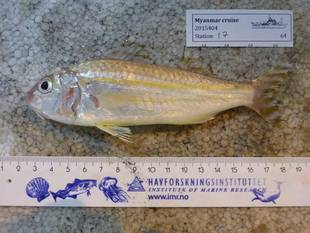
- Upeneus supravittatus , adult.
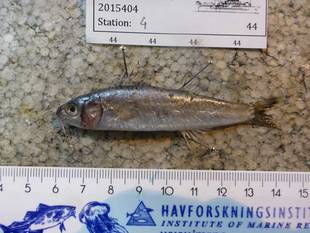
- Upeneus supravittatus , juvenile.

